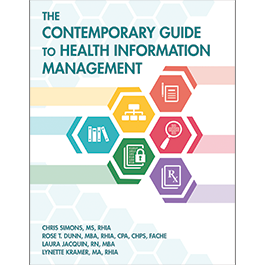Book excerpt: Back to query basics for streamlining HIM, coding, and CDI teams to promote successful practices

Health Information Management
by Chris Simons, MS, RHIA
As the coder or CDI specialist reviews the documentation, he or she will identify opportunities to clarify diagnoses or even to identify conditions that were not previously documented but may be possible given the patient’s presentation.
By querying the physician while the patient is still in the hospital, the documentation can be improved before the patient is even discharged and the case coded. Formal queries involve posing a request for clarification to the physician and expecting a written answer and/or an amendment to the medical record.
It is very important, of course, not to lead the physician to document what you want them to document but instead to point out information or inconsistencies in the documentation and ask for clarification.
Ethically, CDI specialists and coders are bound by a number of industry guidance (including AHIMA and ACDIS codes of ethics and their jointly published “Guidelines for Compliant Query Practice”) not to lead providers into documenting solely for the purpose of improving reimbursement. Instead, the focus is on capturing the most accurate clinical picture of the patient to ensure appropriate code assignment.
There has been some debate about whether the query should be included in your legal health record, although consensus is building in the industry that it should. By including your query and the physician’s response in the record, you make it easier for the physician to respond and improve the likelihood that the case, if audited and denied, will be supported. Be sure, too, that your clerical staff understands that queries should be included in the submission of records in response to audit requests and that your CDI policies and procedures reflect this.
In many programs, CDI specialists identify a preliminary principal diagnosis and “working” DRG (including capture of CCs and MCCs) at the first review, re-reviewing only if any documentation is unclear, poorly supported, or contradictory, then reviewing again at discharge to be sure there are no changes.
Cases without a CC or MCC, or with only one, may need extra attention to reduce the chance of a denial: having multiple CCs or MCCs will strengthen support for the chosen DRG and make the case more “audit proof.” Some programs will identify certain payers (Medicare and Medicaid in particular) or diagnoses for 100% review.
Many programs will review all deceased patients for severity-of-illness (SOI) and risk-of-mortality (ROM) data. Still other programs will pay special attention to longer-than-expected lengths of stay. Whatever your focus, as with all HIM and CDI activities, you will want to track your program’s success to report out to other organizational stakeholders.
Once you have achieved your desired goals, you may shift your focus elsewhere (although some sort of monitoring will help keep progress on a prior goal from slipping back into unacceptable ranges). Everyone on your team must understand the key metrics and goals chosen, and why they are important. Key items to track (and benchmark if possible) may include:
- Case-mix index trends over time (by payer, specialty)
- Denials data
- Most commonly queried diagnoses
- Number of formal queries
- Number of informal queries
- Number of reviews per CDI specialist or coder per time period
- Number/percentage of cases with queries
- Number/percentage of queries that result in DRG change
- SOI and ROM data
- Types of queries (principal diagnosis [PDX], CC/MCC, etc.)
Informal queries
Inpatient coders and CDI specialists often find informal dialog with the medical staff to be the most effective in changing documentation behaviors. While any type of verbal query (one-on-one discussion with a physician regarding specific documentation for an individual patient encounter) should still be documented (in your software or even a spreadsheet) for tracking purposes, the informal query has the advantage of being more collaborative and allows for easy sharing of perspectives regarding coding rules and documentation requirements. Relationship building is very important here.
The goal, of course, is to educate to the point where your query rate drops, and when that happens, it is likely time to identify a new focus.
Editor’s note: This article originally appeared on JustCoding and is an excerpt from The Contemporary Guide to Health Information Management.
